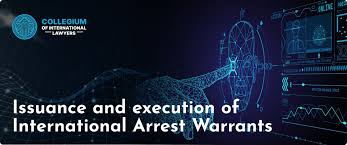
Presidential Autopen Controversy: A Glimpse into Modern Governance
The autopen has emerged as a contentious instrument in the toolkit of modern governance, particularly within the executive branch of the United States government. This device, which allows for the automatic reproduction of a person’s signature, has been utilized by several presidents to handle the sheer volume of paperwork that crosses their desks. However, as the reliance on technology grows, so too does the debate over the legality and ethics surrounding the use of autopen signatures in presidential decision-making. Issues of authorial intent, accountability, and transparency have led to ongoing discussions about the appropriateness of using such technology in matters of critical importance. For an in-depth analysis, consider the presidential autopen controversy legal implications of autopen signatures.
Understanding the Autopen
The autopen, a mechanical device that replicates a person’s signature, was invented in the early 20th century. Initially intended for convenience, it has become commonplace in various industries, allowing for the mass-signing of documents from letters to official paperwork. In the realm of presidential activity, the autopen serves a functional purpose—enabling leaders to manage substantial volumes of correspondence without being bogged down by the minutiae of signature requirements.
Presidents have relied on autopens for decades, with noticeable upticks in use during periods of high demand or national crisis. For instance, more recent presidents have been noted for employing autopens during times when pressing matters required expedited action—situations such as budget sign-offs or emergency declarations.
The Historical Precedent
Historically, the use of autopens traces back to several administrations, with notable examples including Presidents John F. Kennedy and Ronald Reagan. Their administrations used these devices for various functions, particularly during peak legislative sessions. However, the reliance on autopens does raise questions about the authenticity of the signature—essentially, does it reflect the president’s personal engagement with the document?
Legal and Ethical Implications
The crux of the controversy surrounding autopen signatures lies in their legality and ethical implications. Legally, the Constitution does not explicitly address the use of autopens; however, it does emphasize the requirement of the “President’s signature” on various pieces of legislation. This raises a vital question: does an autopen signature constitute the president’s “signature,” or does it lack the essential approval of the person it represents? Opponents argue that autopen usage undermines the importance of personal accountability, as the leaders of the free world risk delegating their unique authority through impersonal technology.
Moreover, the ethical ramifications also come into play. Supporters of autopen usage assert that it allows presidents to remain efficient and responsive, particularly when faced with significant workloads. Conversely, critics argue that reliance on machines for matters requiring personal touch can lead to a disconnect between leaders and constituents. This raises the issue of transparency: citizens expect their leaders to engage personally with the critical operations of governance, not delegate them to a machine.

The Debate on Autopen Transparency
Beyond legal and ethical concerns, the debate surrounding transparency in presidential governance highlights the need for accountability. As governments evolve and integrate technology into their operations, citizens are increasingly skeptical of the authenticity behind the actions of their leaders. In this context, the autopen may be perceived as emblematic of a broader trend of detachment from traditional processes, reducing personal engagement in favor of efficiency.
In some instances, public figures and political commentators have criticized the use of the autopen as representative of a larger issue—the idea that distance between leaders and the public is growing, driven by technology. As leaders increasingly favor efficiency, the actual engagement with constituents may diminish, potentially leading to disillusionment among the populace.
Case Studies and Recent Usage
Recent administrations have adopted autopen technology with varying levels of transparency. For example, during the Obama administration, autopens became a routine method for signing condolence letters and executive orders. Instances of frequent autopen usage ignited debates in Congress, as lawmakers questioned the implications of the signatures on major legislative issues. Despite the technological convenience, critics worried that important decisions were being made without the necessary reflection and engagement from the president.
Similarly, the Trump administration likewise employed autopen signatures in several cases, particularly during executive orders that required rapid response. This practice further fueled debates about the authenticity of presidential involvement, even as the autopen facilitated timely decision-making.
Future Considerations in Governance
The future of autopen signatures in the presidency appears uncertain as the conversation around accountability and transparency evolves. As the line between technology and personal engagement continues to blur, lawmakers and citizens alike will need to navigate the implications of these advancements carefully. Finding the appropriate balance between efficiency and accountability will be a pressing challenge for future administrations, and discussions around the autopen’s use will likely continue as an essential point of debate.
The enduring question remains: as technology progresses and changes the landscape of governance, how can leaders ensure that they maintain personal engagement with the critical operations of their roles? The use of autopen signatures serves as a reflection of the broader implications of technology on leadership, creating a need for a deeper understanding of how modern methods can coexist with the foundational principles of governance established by previous generations.
Conclusion
In conclusion, the presidential autopen controversy epitomizes a complex interplay between tradition and technology in governance. The device’s practical advantages are overshadowed by the broader implications of its usage—chief among them, questions of legality, ethics, and transparency. As presidents continue to navigate the demands of their office with the help of technologies like the autopen, the ongoing dialogue surrounding its use will be critical to understanding the future trajectory of presidential responsibility and engagement with the American public.
